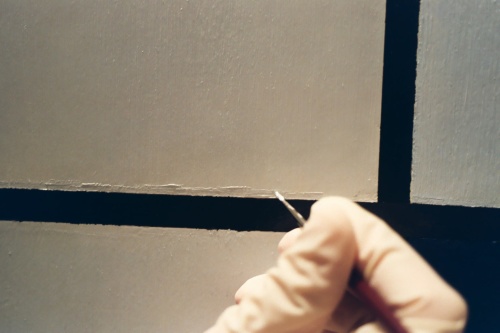Download the essay.
This is a perennially unfinished essay—or rather, it’s been completed and given as a lecture many times, but I still can’t see how to frame it in such a way that art historians will see its pertinence. The discipline has become very distant from the actual experience of making, and mistrustful of mimicry of all sorts.
It is a curious and significant fact that most art historians have never tried to make art: curious because a large number of people who teach literature and literary criticism have written fiction or poetry, and most people who teach music theory or history play an instrument; and significant because that means the experience of making is seldom part of what art historians consider when they write.
In smaller institutions, and in some parts of the world, it is common for art historians to also be artists. But in North America, much of Europe, and places influenced by their sense of art history, and especially in the major institutions, it’s common for art historians to have only minimal experience making objects.
When the topic of this essay comes up in European and North American conferences, it’s usually posed as a matter of art historians learning some artistic techniques, so they can speak more fluently about, say, lithography or pastel. My interest is different: I’m concerned that the experiences of artmaking–the mess of it, the uncertainty, the loneliness of the studio, the feel of the materials and tools, even the smell–are considered inappropriate for historical inquiry.
This topic matters immensely when it comes to the philosophic, practical, and institutional distance between studio art and art history. Art history would be written differently if most of its practitioners were also practicing artists; and universities would be configured differently if the experiences of the studio were considered essential for the education of art historians. But it is excruciatingly difficult to make the case. Hence the unfinished nature of this essay.
The essay is 26 pp., and contains discussions of Aristotle, Derrida, Joseph Kerman, Stephen Melville, Gavin Butt, Rosalind Krauss, and examples including Mondrian, Rubens, Titian, Sanchez-Cotan, El Greco, and Bach’s Well-Tempered Clavier.
The apparently unrewarding, overdetermined activity of copying is revealing about many things art history takes for granted, and about assumptions regarding originality and its opposite. I have been thinking about this since I switched from studio art to art history, and a rapprochement seems even less attainable now than it once might have been. In contemporary art history there is lots of talk about materiality and embodied experience but no trust, and little interest, in what actually happens in studio practice—and no faith in the possibility that particular, directed experiences can yield understanding that might speak to art historical concerns.


Dear James Elkins,
(I got to your website via “Bruges-la-morte” and took a walk through your website – ending here, because I am working artist who draws and paints; and also reads).
I totally agrees with the premise of your essay: yes, art historians should learn to paint – and to draw. My experience with Patrick Maynard’s “Drawing Distinctions” was entirely different from yours: reading it, I thought: here at last, someone who draws writing about drawing.
The impression was confirmed when I met the author at as small conference held at University of Waterloo, called “To draw – or not.” Indeed, Patrick Maynard draws (at the time he was attending a weekly life-drawing group) and paints (he has since moved to England, and he paints watercolours – quite touching still lives, drawings of people and animals).
I wonder why our reaction to “Drawing Distinctions” was so different – could it be that drawing (and mark-making) is part of my daily practice?
Dear Isabella, thanks for that. I also draw (though not every day!). I think the differences refllect the enormous variety of ways of thinking about drawing. Some future material on drawing that might interest you: (a) my wife, Margaret MacNamidhe, is completing a book on the history of drawing that covers c. 1880 to the present; if you’d like, I could put you in touch with her; (b) there’s a project on bringing foundation studio and art history together here: https://preparationoftheartwork.wordpress.com/integratedstudio/ — contributions are welcome. (The page’s deadlines etc. may need updating; it will appear in 2024.) Best, Jim